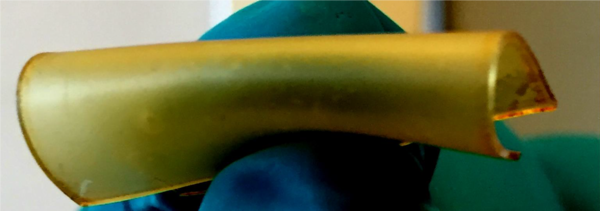Antimicrobial coating for urinary catheters
The presence of a urinary catheter is the most important risk factor for bacteriuria. These potentially pathogenic bacteria and an indwelling catheter predisposes to the development of a nosocomial UTI. The bacteria may gain entry into the bladder during insertion of the catheter, during manipulation of the catheter or drainage system, around the catheter, and after removal.
Once a catheter is placed, the daily incidence of bacteriuria is 3-10%. Between 10% and 30% of patients who undergo short-term catheterization (i.e., 2-4 days) develop bacteriuria and are asymptomatic. However, 90% and 100% of patients who undergo long-term catheterization develop bacteriuria. About 80% of nosocomial UTIs are related to urethral catheterization. The presence of potentially pathogenic bacteria and an indwelling catheter predisposes to the development of a nosocomial UTI. The bacteria may gain entry into the bladder during insertion of the catheter, during manipulation of the catheter or drainage system, around the catheter, and after removal.
In this project a cooperation of Zorg Innovaties Nederland and the Rijks Universiteit Groningen aims for the development of a antimicrobial (AM) coating which can be applied to the surface of catheters in order to reduce the risk of urinary tract infections (UTI’s). Firstly, a hyperbranched antimicrobial polymer coating developed by the Rijks Universiteit Groningen was successfully immobilized onto silicone rubber (PDMS) sheets, and its stability in physiological solution (PBS) and pooled human urine was determined. Secondly the antimicrobial efficacy of the coating against the most common uropathogens was determined, and the cytotoxicity of the coating tested.
The development and implementation of a antimicrobial coating will strongly reduce the number of UTI’s as a consequence of catheterization. This is a cost-effective way to prevent unnecessary nosocomial infections and will reduce the health care costs. The coating that will be developed in this project will maintain health and prevent healthcare, and maximize the effect and minimizes the trauma of a catheter.



